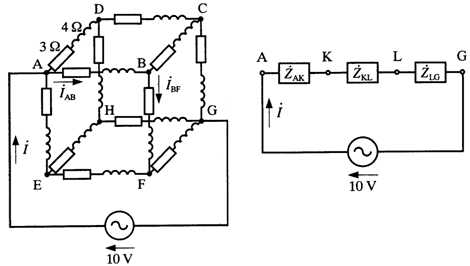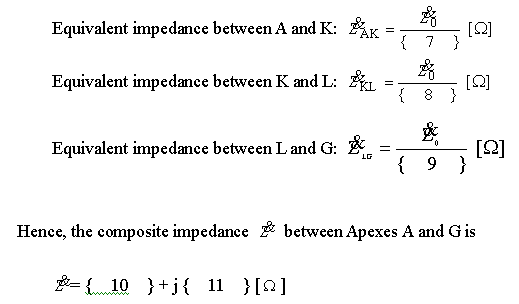As shown in Fig.1, there is the alternating current circuit of a load to which a 10 V alternating voltage is applied between A apex and G apexes, consisting of resistance and inductive reactance at each side of the cube. In the texts (1), (2) and (3) relating to this circuit, there are blanks. From the following characters and values in the group of answers under each text, select the ones that you judge are most suitable to be entered in the corresponding blanks. You can use the same symbols (s) twice or more.
 |
|
Fig. 1 |
Fig. 2 |
(1) In this cubic circuit, each of apexes B, { 1 } and { 2 } has the same potential, and in the same way , apexes C, { 3 } and { 4 }are the same in potential. The former three points are represented by K, assumed as an point with the same potential, and the latter three points by L, assumed as an point of the same potential. The relationship given in Fig.1 can be depicted as an equivalent circuit as shown in Fig.2.
Group of answers for (1):
a A |
b B |
c C |
d D |
e E |
f F |
g G |
h H |
(2) Since on one of the sides forming a cubically connected load as shown in Fig. 1, impedance 0 is given by the following equation :
= + j []
the equivalent impedances between A and K, K and L and between L and G in Fig. 2 are given as follows;
(2) Since on one of the sides forming a cubically connected load as shown in Fig. 1, impedance 0

the equivalent impedances between A and K, K and L and between L and G in Fig. 2 are given as follows;



